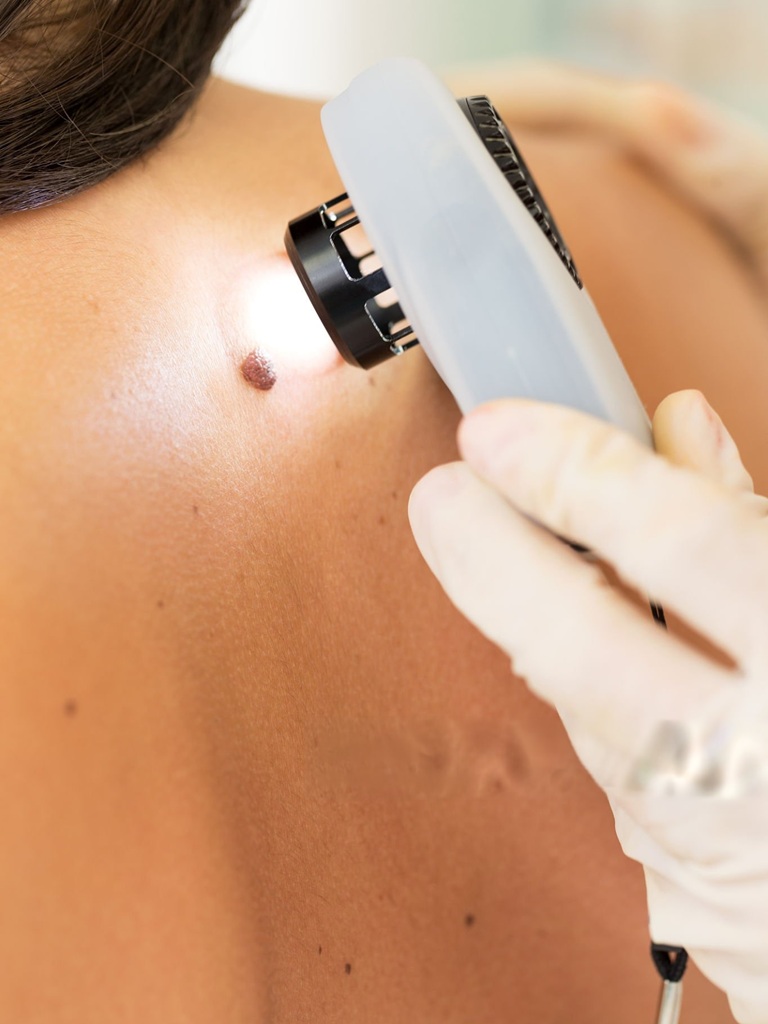
Malignant Melanoma Assessment & Treatment
What Is Malignant Melanoma?
Malignant melanoma is a serious and potentially life-threatening form of skin cancer that
develops in the melanocytes, the cells that produce pigment (melanin) in your skin.
Melanoma often begins as a new mole or a change in an existing mole, and it can spread rapidly
to other parts of the body if not detected and treated early.
Early detection is critical. When caught early, melanoma is highly treatable.
Warning Signs of Melanoma
Use the ABCDE rule to spot potential signs of melanoma:- A – Asymmetry: One half looks different from the other
- B – Border: Edges are irregular, ragged, or blurred
- C – Colour: Multiple shades (brown, black, red, white, blue)
- D – Diameter: Larger than 6mm (pencil eraser size)
- E – Evolving: Changing in size, shape, colour, or sensation
- A sore that doesn’t heal
- A mole that bleeds, itches, or becomes painful
- A new pigmented spot on the skin
If you notice any of these signs, seek a professional skin assessment immediately.
👉 Contact Bollin Clinic in Altrincham today to schedule your Malignant Melanoma consultation and take the first step towards expert skin cancer care and peace of mind.
Book NowHow Is Melanoma Diagnosed and Treated
At Bollin Clinic, we provide urgent assessment, biopsy, and treatment planning for suspected melanoma.-
1. Skin Examination
- Full body skin check by an experienced clinician
- Dermatascope used to closely examine suspicious moles
- Photographic monitoring if needed 2. Biopsy
- A quick, in-clinic procedure to remove part or all the lesion
- Sent for histopathology to confirm diagnosis 3. Treatment
- Surgical Excision: If confirmed, we perform a wide local excision to remove the melanoma and surrounding tissue.
Early-stage melanomas can often be fully removed with surgery alone.

Who is at Risk?
Melanoma can affect anyone, but risk increases with:
- Excessive sun exposure or tanning bed use
- Fair skin, freckles, or red/blonde hair
- History of sunburns, especially in childhood
- Many moles
- Family or personal history of melanoma
- Weakened immune system
Regular skin checks are essential if you're in a high-risk group.

Malignant Melanoma Treatment
Frequently asked questions
Is melanoma dangerous?
Yes, melanoma is the most dangerous form of skin cancer, but it is highly treatable when caught early. That's why early diagnosis is crucial.
Does melanoma always start in a mole?
Not always. Melanoma can appear as a new spot-on normal skin or change in an existing mole. It can even occur in areas not typically exposed to the sun (e.g., under nails, soles of feet).
Is melanoma painful?
Early melanomas are usually painless. Any mole that itches, bleeds, or changes should be checked.
How quickly does melanoma spread?
Some types of melanomas can spread very quickly, within weeks or months. Time is of the essence.
What happens after treatment?
After melanoma treatment, you'll need:
- Regular skin checks (every 3–12 months)
- Sun protection education
- Monitoring for recurrence or new lesions
We’ll provide a personalized follow-up plan.
